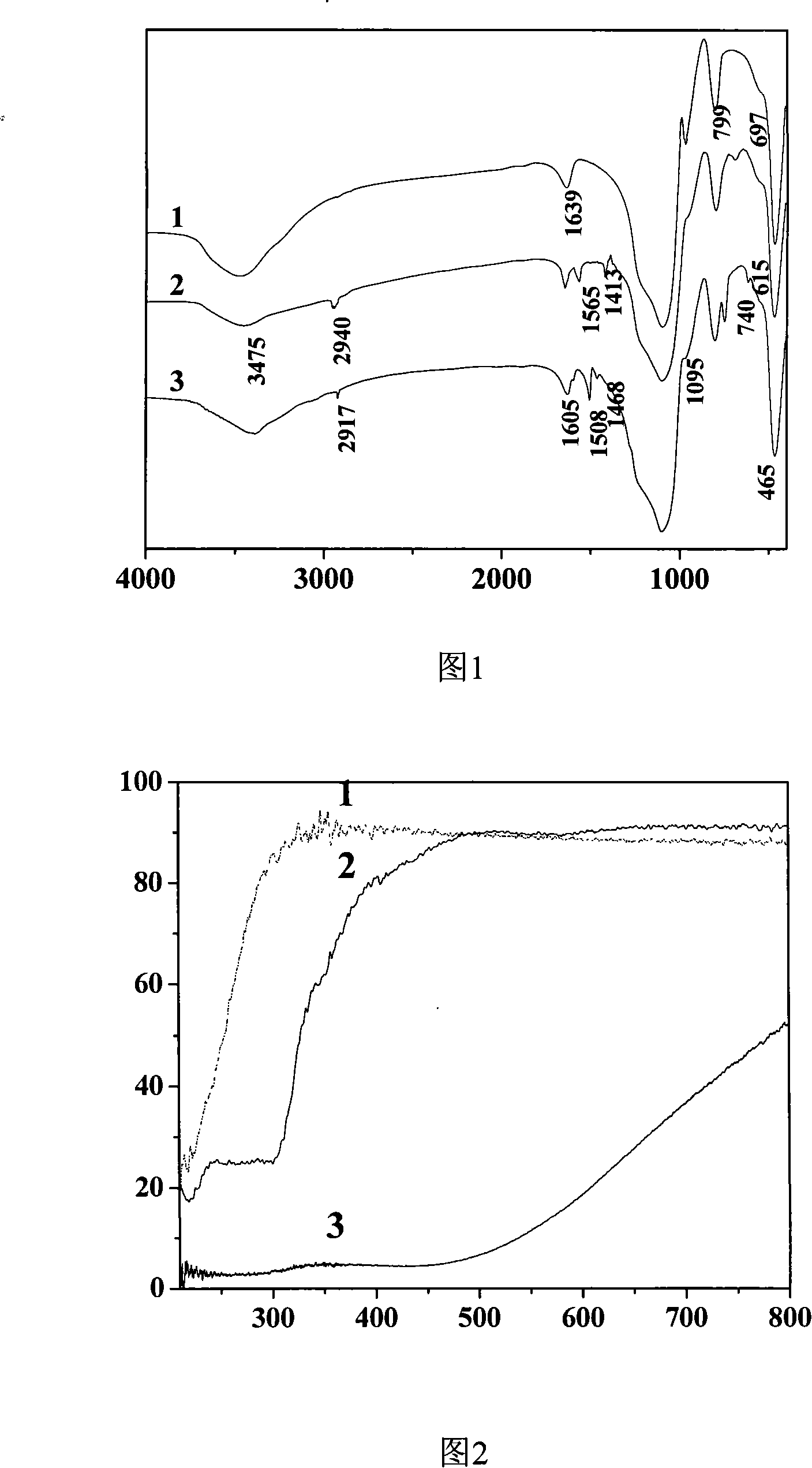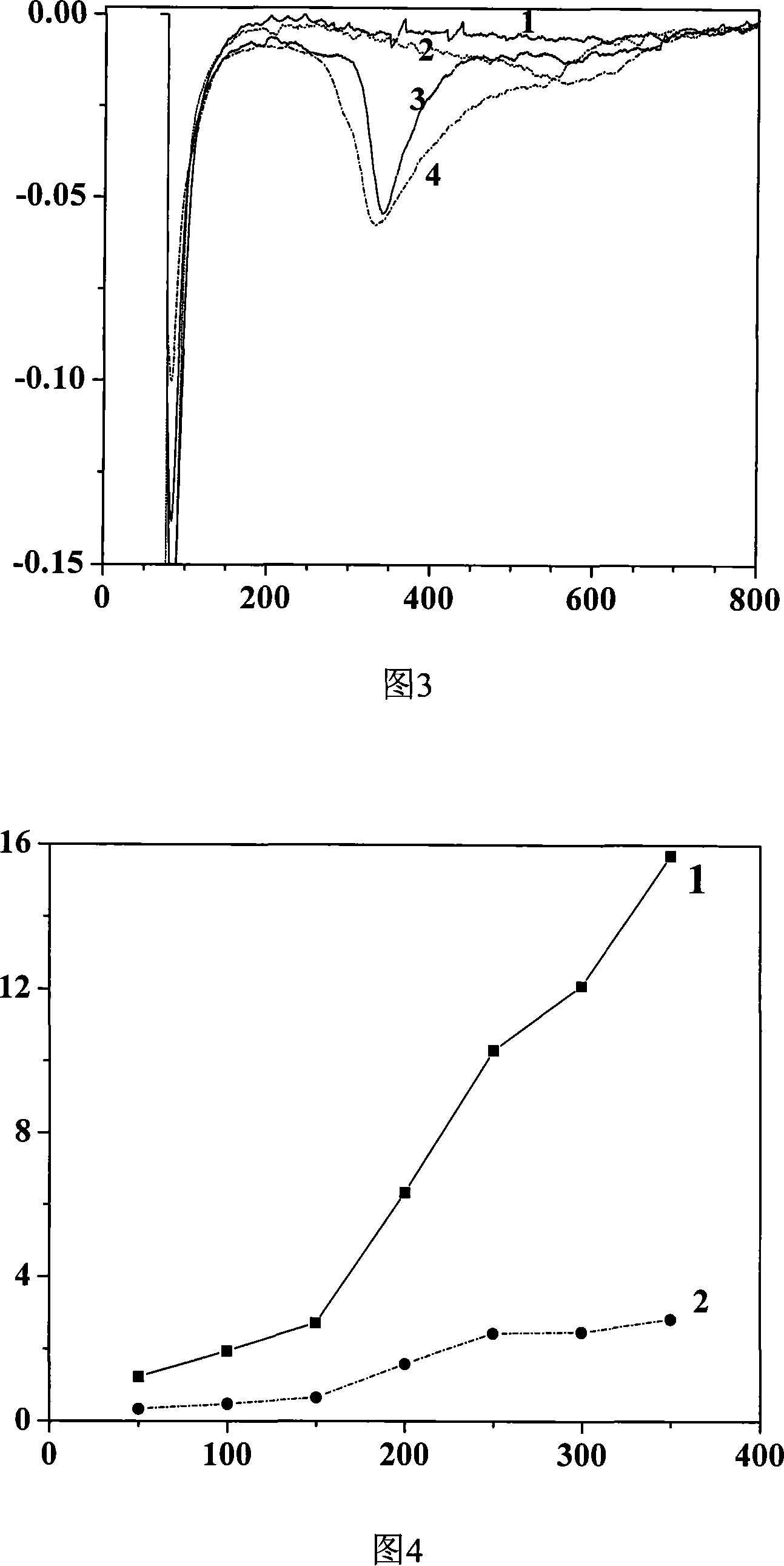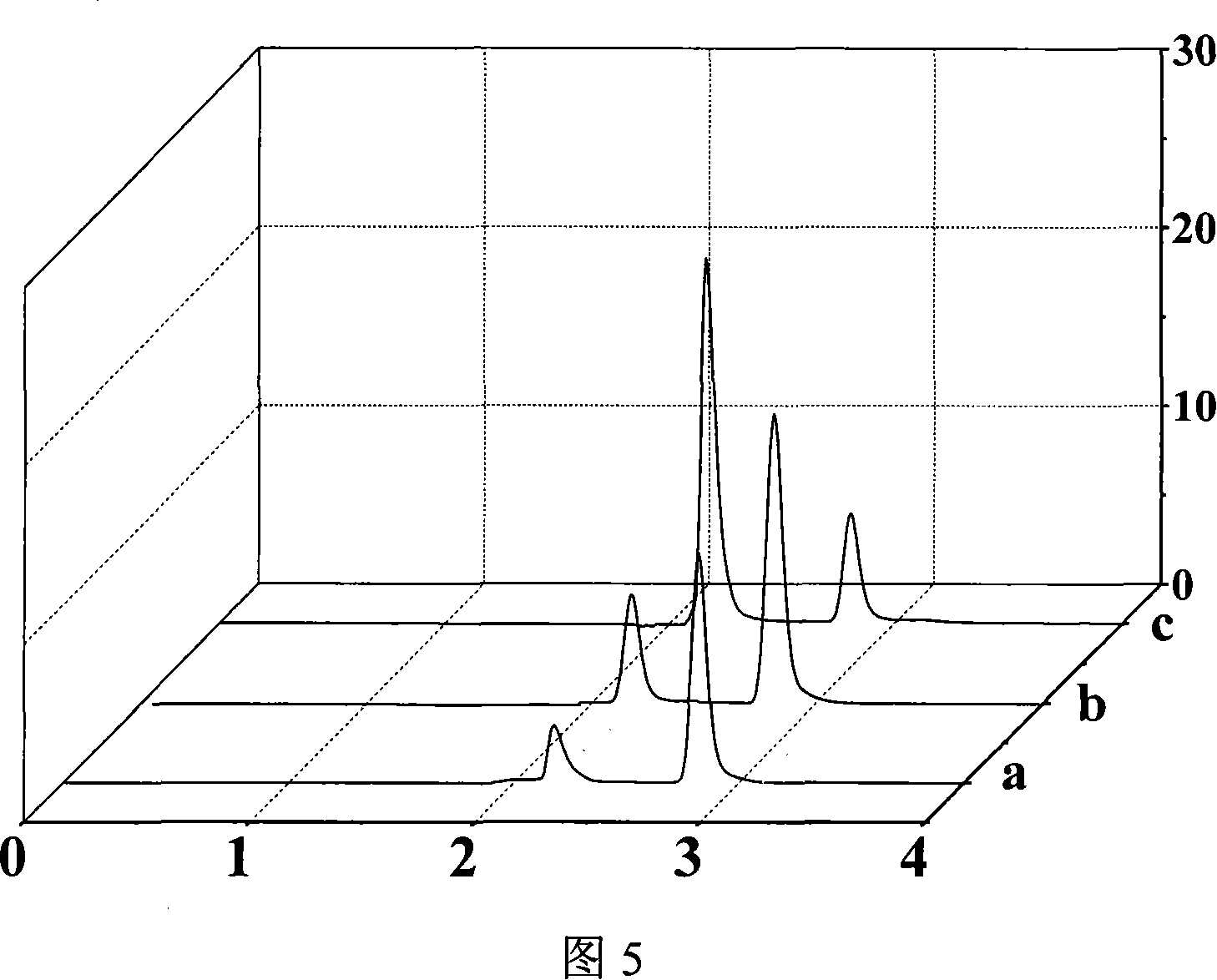SiO2 granule surface molecule print adsorption agent and preparation thereof
A molecular imprinting, particle surface technology, applied in chemical instruments and methods, other chemical processes, silicon compounds, etc., can solve the problems of reduced recognition ability and service life, and achieve the effect of fast equilibrium speed, simple preparation process and wide range
- Summary
- Abstract
- Description
- Claims
- Application Information
AI Technical Summary
Problems solved by technology
Method used
Image
Examples
example 1
[0044] Example 1: (1) Add 3g SiO to the beaker 2 and 50mL 0.25mol L -1 NaOH solution, stirred and reacted at 25°C for 60 min, washed until the eluent was neutral, and filtered with suction. The resulting SiO 2 Particles added to 50mL 2.0mol L -1 In HCl solution, stir and react at 25°C for 60 minutes, wash until the eluent is neutral, filter with suction, and dry to obtain activated SiO 2 particles;
[0045] (2) 1g of activated SiO 2 Add the particles to a 5% ethanol solution of 3-aminopropyltriethoxysilane by volume, stir and react at a temperature of 40°C for 12h, wash with ethanol to remove unreacted 3-aminopropyltriethoxysilane , suction filtration, and vacuum drying to obtain aminated SiO 2 particles;
[0046] (3) Add 0.01mol of o-phenylenediamine and 0.001mol of 2,4-dinitrophenol into another beaker, then add 100mL of distilled water, and stir and react at 45°C for 30min;
[0047] (4) Add 1 g of aminated SiO to the beaker 2 Particles, ultrasonically dispersed for...
example 2
[0050] Example 2: (1) Add 12g SiO to the beaker 2 and 50mL 0.5mol L -1 NaOH solution, stirred and reacted at 45°C for 10 min, washed until the eluent was neutral, and filtered with suction. The resulting SiO 2 Particles added to 50mL 1.0mol L -1 In HCl solution, stir and react at 40°C for 60 minutes, wash until the eluent is neutral, filter with suction, and dry to obtain activated SiO 2 particles;
[0051] (2) 10g of activated SiO 2 Add the particles to a 2% ethanol solution of 3-aminopropyltriethoxysilane by volume, stir and react at a temperature of 40°C for 15h, wash with ethanol to remove unreacted 3-aminopropyltriethoxysilane , suction filtration, and vacuum drying to obtain aminated SiO 2 particles;
[0052] (3) Add 0.1 mol of aniline and 0.001 mol of 2,6-dichlorophenol into another beaker, then add 50 mL of distilled water, and stir at 50°C for 30 minutes;
[0053] (4) Add 6g of aminated SiO to the beaker 2 Particles, ultrasonically dispersed for 5 minutes to...
example 3
[0056] Example 3: (1) Add 6g SiO to the beaker 2 and 50mL 1.0mol L -1 NaOH solution, stirred and reacted at 25°C for 30 min, washed until the eluent was neutral, and filtered with suction. The resulting SiO 2 Particles added to 50mL 2.0mol L -1 In HCl solution, stir and react at 35°C for 200min, wash until the eluent is neutral, filter with suction, and dry to obtain activated SiO 2 particles;
[0057] (2) 2g of activated SiO 2 The particles were added to the ethanol solution of 3-aminopropyltriethoxysilane with a volume ratio of 6%, stirred and reacted at a temperature of 40°C for 6h, and washed with ethanol to remove unreacted 3-aminopropyltriethoxysilane , suction filtration, and vacuum drying to obtain aminated SiO 2 particles;
[0058] (3) Add 0.1 mol of o-phenylenediamine and 0.05 mol of 4-nitrophenol into another beaker, then add 75 mL of distilled water, and stir and react at 45°C for 60 min;
[0059] (4) Add 1.5g of aminated SiO to the beaker 2 Particles, ult...
PUM
 Login to View More
Login to View More Abstract
Description
Claims
Application Information
 Login to View More
Login to View More - R&D
- Intellectual Property
- Life Sciences
- Materials
- Tech Scout
- Unparalleled Data Quality
- Higher Quality Content
- 60% Fewer Hallucinations
Browse by: Latest US Patents, China's latest patents, Technical Efficacy Thesaurus, Application Domain, Technology Topic, Popular Technical Reports.
© 2025 PatSnap. All rights reserved.Legal|Privacy policy|Modern Slavery Act Transparency Statement|Sitemap|About US| Contact US: help@patsnap.com



